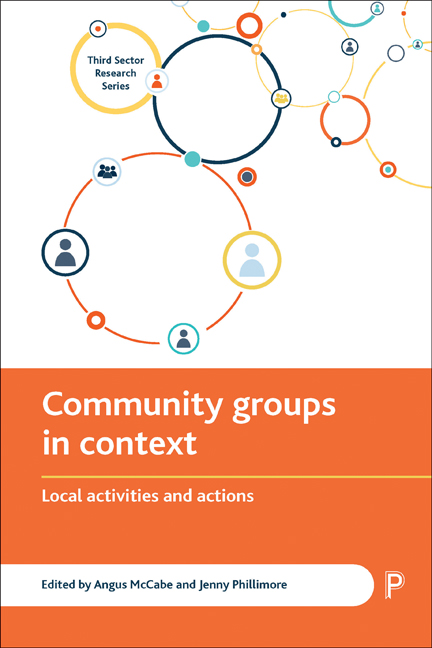Book contents
- Frontmatter
- Contents
- List of tables and figures
- Foreword
- Series editor’s foreword
- Acknowledgements
- Notes on contributors
- Introduction Why get below the radar? The importance of understanding community groups and activities
- Part One Scoping and mapping community actions and activities
- Part Two Community groups and activities in context
- Part Three Under-explored radars
- Part Four Thinking about voice, learning and emotion below the radar
- Index
eleven - ‘Almost a whisper’: black and minority ethnic community groups’ voice and influence
Published online by Cambridge University Press: 05 April 2022
- Frontmatter
- Contents
- List of tables and figures
- Foreword
- Series editor’s foreword
- Acknowledgements
- Notes on contributors
- Introduction Why get below the radar? The importance of understanding community groups and activities
- Part One Scoping and mapping community actions and activities
- Part Two Community groups and activities in context
- Part Three Under-explored radars
- Part Four Thinking about voice, learning and emotion below the radar
- Index
Summary
Chapter aims
Despite the increase in black and minority ethnic (BME) communities in urban, and more recently, rural England, little has been written about the voice and influence of these communities in terms of policy. This applies particularly to groups in rural areas. This chapter therefore aims to:
• explore the strategies adopted by BME community groups in terms of achieving influence;
• compare the experiences of urban and rural community groups – their similarities and differences;
• analyse the extent to which these communities are able to affect policy outcomes in relation to issues that are important to them.
Background: why understanding BME voice is important
Understanding the voice and influence of BME is important for a number of reasons. First, there has been a growth in the number of BME communities in England and Wales over the past five decades. The BME population in England and Wales rose from 74,500 in 1951 to 7.9 million by 2011, representing 14% of the total population. Further ‘over the past two decades England and Wales has become more ethnically diverse’ (ONS, 2012, p 4). Migrants have come not only from New Commonwealth countries but also from Africa and the Middle East (most recently Syria), as a result of war, and from Eastern Europe since EU accession. Overall, the BME population was 22.8% in urban areas and 5% in rural areas at the 2011 census (ONS, 2013, p 22).
However, the distribution of BME populations in both rural and urban areas is uneven. For example, Birmingham and Leicester are predicted to become majority BME cities in the near future. While the North East has the fifth highest number (out of 10 regions) of people living in urban settlements, it has the least diverse population of any English region other than the South West, with ‘over 95% identified as White in these areas’ (ONS, 2013, p 8). While rural BME populations are generally smaller than those in urban areas, the 2011 census indicated that the average BME population of rural areas comprised between 3% and 5% of the total population (ONS, 2012) an increase of 14.8% since the 2001 census. Further, the profile of rural BME communities has become increasingly diverse since 2001.
- Type
- Chapter
- Information
- Community Groups in ContextLocal Activities and Actions, pp. 221 - 240Publisher: Bristol University PressPrint publication year: 2017



